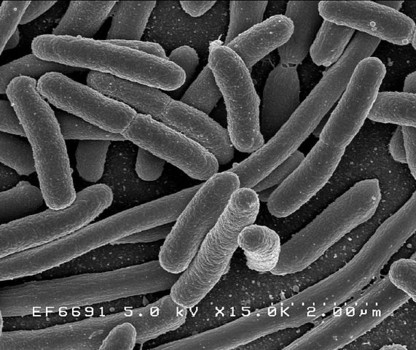A 25 year study of the adaptation of the bacteria Escherichia coli to develop the ability to use citrate ions in the agar the bacteria grew in establishes a firm relationship between the emergence of an adaptive trait and the environment that may nurture that trait according to research published by scientists at the University of Texas at Austin, issue of the journal Proceedings of the National Academy of Sciences.
Normal Escherichia coli were grown on agar that was seeded with citrate ion producing compounds. Escherichia coli do not naturally metabolize citrate. The Escherichia coli developed the capacity to metabolize citrate ions over a period of 31,500 generations.
The researchers developed a special method that examined all the variants that had developed in the test bacteria over time called the “recursive genome-wide recombination and sequencing,” or REGRES.
The program found that a mutation of two genes was responsible for the bacteria’s development of the ability to use citrate as food. The researchers found that both adaptations did not occur simultaneously but that both were necessary for an optimized use of citrate as a food source.
The experiment indicates that an initial evolutionary change is as important as the environment that nurtures that change and allows the adaptation to persist over time.















